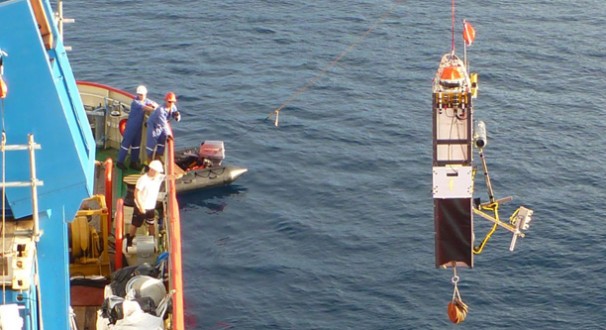A (Cautionary) Tour of the Mermaid Sapphire

Solomon Sea, south of New Britain Island
On ships, people fall. They trip on steel combings and tear up an ankle. They tumble down a stairwell and rip open a knee. So far, we’ve been accident free on the Mermaid Sapphire, but on other ships Captain Stuart Buckle and his officers have seen every kind of mishap: the new sailor who fractured his skull because he failed to duck going through a doorway, the nylon mooring line that tightened around a man’s leg and imploded his tibia, the winch that crushed a deckhand’s forearm, leaving his muscles crimson and hanging.
When you talk to the ship’s crew about their jobs or watch them work, you realize that most of the tasks on the Mermaid Sapphire pose some kind of danger. Going to sea involves heavy machinery, high-pressure steam, volatile fuels, heavy lifts, stepped up voltages, and unpredictable weather. If you visit the engine room, you have to wear protective ear covers. When you walk between the roar of the twin 2,575 horsepower Caterpillar engines you see how easy it would be to burn your legs—one slip and your shin is hard against a hot exhaust line and your skin is sizzling like bacon fat. You quickly understand that there are certain places, especially when the 12-ton sub is hauled out of the ocean onto a heaving deck, where you’re exposed and vulnerable.
The first thing everyone did when they came aboard the Mermaid Sapphire was to learn their way around this complex, all-steel world. The deck that runs from the bow to the stern is the main deck, or weather deck. Climb up the stairwell from this deck into the ship’s superstructure and you pass through the forecastle deck, the upper forecastle deck, and the officer deck, ending up in the quiet, screen-filled hush of the bridge. Jim’s cabin is on the officer deck down the hallway from John Bruno and Charlie Arneson. Some of the ship’s compartments are called rooms, such as the engine room, but the word room is otherwise rarely used. The place where we eat is called the mess hall.
Following an early morning test of the 3-D video camera on lander Mike, the ship in all its complexity steams 50 miles (80 kilometers) southeast into the Solomon Sea. As it was leaving the lee of the island, the wind rose to 25 knots and the ship began to roll in six-foot (two-meter) swells. Shortly after noon we’re in position over the deepest part of the New Britain Trench. Five miles (eight kilometers) of water lies beneath our keel.
Jim checks the weather forecast and decides to postpone the planned dive until the seas settle. It looks like we might launch the sub after dinner. A few hours later, he calls the senior members of his team together. The forecast calls for calm seas in the morning; they’ll make the dive tomorrow.
Just before midnight I go out on the main deck and look at the DEEPSEA CHALLENGER in her hanger and the Zodiacs in their cradles. They’re reminders that when you work on the ocean you live in a place where everything floats—the ship, the small boats, the seaweed, and the clouds. The tide rises and falls twice a day, and you rise and fall with it. If you’ve been out at sea for almost a month, there are moments when you stand at the ship’s railing, gaze across the universe of water, and think that the ship might have been born from the sea.
Just before I leave the railing I catch a reflection of the ship’s red hull in the dark waters. Ships like the Mermaid Sapphire have been around for 200 years. The ocean that suspends her has been around since the Earth came into being.
Photograph by Joe MacInnis



